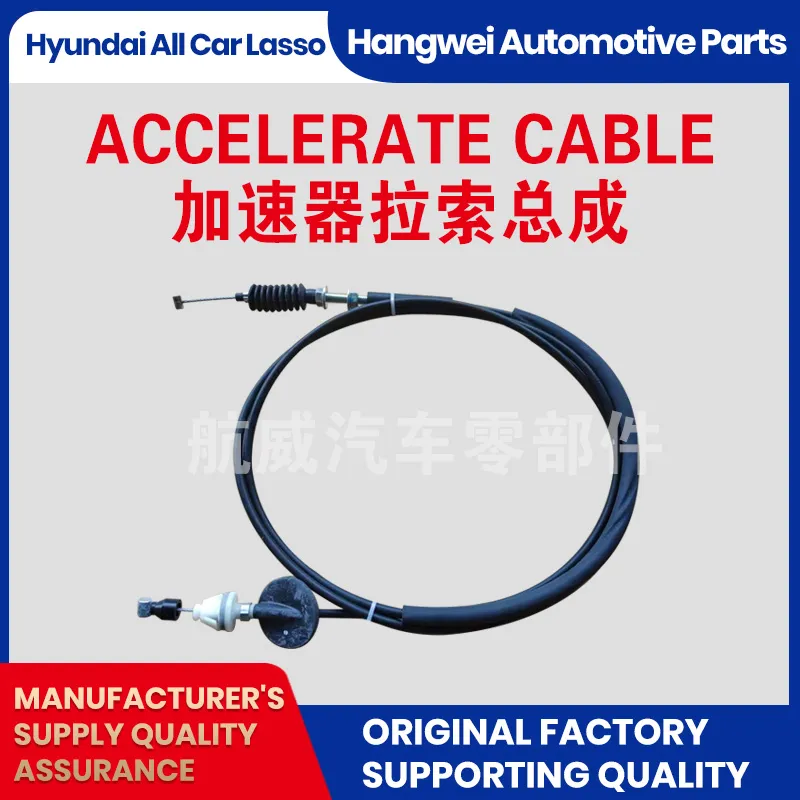fixing throttle cable
Fixing the Throttle Cable A Comprehensive Guide
The throttle cable is an integral component of any vehicle, connecting the accelerator pedal to the engine. It plays a crucial role in controlling the engine's power output, directly influencing the vehicle's performance. If you're experiencing issues with your throttle cable—whether it's sticking, fraying, or breaking—it's essential to address the problem promptly. Not only can a faulty throttle cable affect your vehicle's performance, but it can also pose significant safety risks. This article will guide you through the process of diagnosing and fixing a malfunctioning throttle cable.
Recognizing the Symptoms
Before diving into repairs, it’s important to identify the symptoms of a problematic throttle cable. Common signs include
1. Sticking or Unresponsive Acceleration If your vehicle hesitates or fails to accelerate as you press down on the accelerator, the throttle cable may be stuck or damaged. 2. Erratic Engine Response Should you experience sudden surges in power or an inability to maintain a steady speed, this could indicate a problem with the cable. 3. Visible Wear or Damage Inspect the cable for fraying, kinks, or complete breaks. If you notice any visible damage, it's time for a replacement.
Tools You Will Need
Before you start working on the throttle cable, gather the necessary tools
- Screwdrivers (both flathead and Phillips) - Wrenches or socket set - Pliers - Replacement throttle cable (if necessary) - Lubricant (if the cable can be salvaged) - Safety goggles and gloves
Step-by-Step Fix
1. Diagnosing the Problem
Begin by determining whether the issue lies with the throttle cable itself or if it is related to other components, such as the accelerator pedal assembly or the throttle body. Inspect the entire cable routing for any signs of obstruction or binding. It’s vital to check both under the dashboard and the engine compartment.
2. Removing the Old Cable
If you’ve concluded that the throttle cable is damaged or malfunctioning, follow these steps to remove it
- Disconnect the Battery Safety first! Always disconnect the battery to avoid any electrical shorts. - Detach the Accelerator Pedal Locate where the cable connects to the accelerator pedal and remove any fasteners holding it in place. Gently pull the pedal away to access the cable.
- Remove the Cable from the Throttle Body Navigate to the throttle body under the hood. Depending on your vehicle, you may need to remove additional components, such as the air intake duct, to gain access. Detach the cable from the throttle body, taking note of how it is routed for reinstallation.
3. Installing the New Cable
fixing throttle cable

With the old cable removed, it’s time to install the new one
- Thread the New Cable Begin by threading the new throttle cable through the same path as the old one
. Ensure that it is free from any obstructions.- Connect to the Throttle Body Attach the new cable to the throttle body. Make sure it is secured properly and operates smoothly.
- Reattach the Accelerator Pedal Once the cable is connected to the throttle body, reattach it to the accelerator pedal. Ensure that it is suitably tightened.
4. Testing the Installation
After the new cable is installed, it is essential to test the system
- Reconnect the Battery Once you’ve completed the installation, reconnect the battery.
- Start the Engine Turn on your vehicle and check for any strange noises or visible issues.
- Test the Accelerator Gently press the accelerator pedal to ensure smooth operation and that the engine responds appropriately.
Maintenance Tips
To prevent future problems with your throttle cable, consider the following maintenance tips
- Regular Inspections Periodically check the throttle cable for signs of wear or damage.
- Lubricate If your throttle cable is adjustable, consider lubricating it as advised by the vehicle's manual.
Conclusion
Fixing a throttle cable is a manageable task for those with basic mechanical skills. By following the steps outlined above, you can ensure that your vehicle accelerates smoothly and safely. Remember, if you are ever in doubt, it is best to consult a professional mechanic. Taking care of your vehicle's components not only enhances performance but also ensures your safety on the road.
-
Workings of Clutch Pipe and Hose SystemsNewsJun.04,2025
-
The Inner Workings of Hand Brake Cable SystemsNewsJun.04,2025
-
The Secrets of Throttle and Accelerator CablesNewsJun.04,2025
-
The Hidden Lifeline of Your Transmission Gear Shift CablesNewsJun.04,2025
-
Demystifying Gear Cables and Shift LinkagesNewsJun.04,2025
-
Decoding Clutch Line Systems A Comprehensive GuideNewsJun.04,2025
